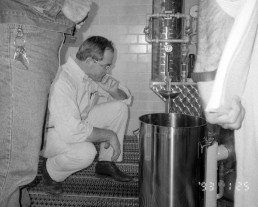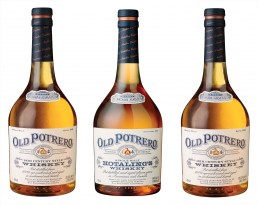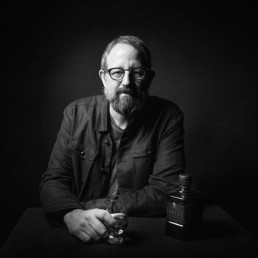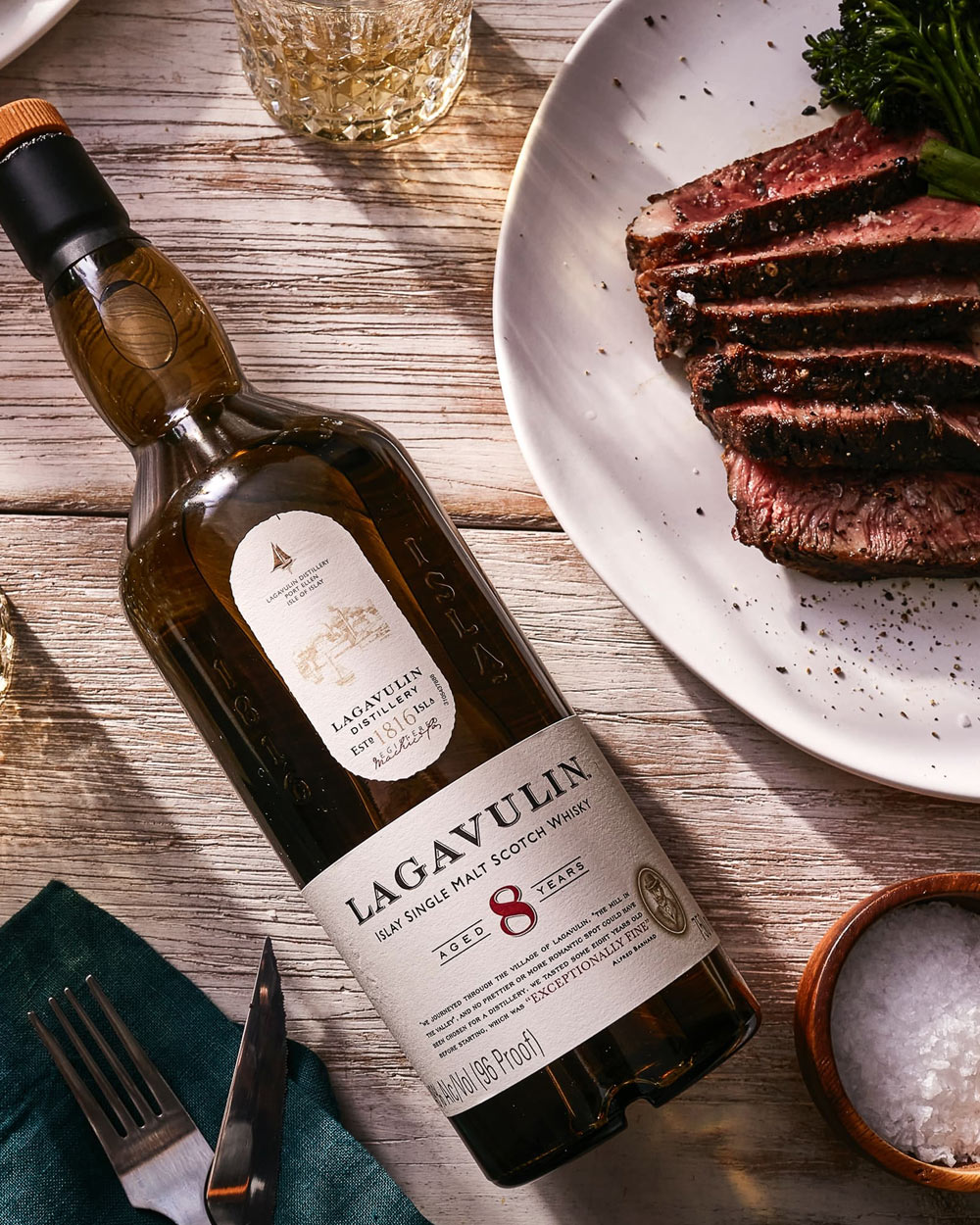Part II of the Whiskey Rebels excerpt series focuses on Fritz Maytag, the visionary who was not only instrumental in the earliest days of the modern craft distilling scene by creating Old Potrero, but also jumpstarted American micro-brewing.
The rise in American bourbon popularity helped jump-start the craft distilling movement, but it was not the only factor.
A groundswell around local and sustainable food helped prime consumers, whose appetites were whet for something fresh in spirits. Meanwhile, the bartending community became obsessed with pre-Prohibition drinks, whose recipes were unearthed by cocktail historians. Craft producers now had the attention of the community, but could they deliver the goods?
Craft beer and microbreweries emerged in an environment where a handful of large producers made virtually all commercial beer. Six companies—Anheuser Busch, Miller, G. Heileman, Stroh, Coors, and Pabst—controlled 92 percent of the beer market in 1984. Massive industrial facilities were churning out millions of gallons of serviceable but unexciting brews, whose fans would choose one or the other like Pepsi over Coke. Craft brewers blew up this banal scene with many complex European-style ales and pilsners, sparking a massive resurgence in the microbrew industry. By 2016, there were 5,000 breweries in the United States.On paper, the microbrew model seemed to apply perfectly to craft spirits. In 2000, 9 or 10 distilleries made almost all of the nearly 35 nationally distributed bourbons and the scant handful of ryes. But the difference, as many a headstrong entrepreneur would soon learn, was that unlike the watered-down beers coming out of the major breweries, the quality of Kentucky bourbon is world class. No matter how organic the ingredients are or how tiny the handmade batch is, competing with the experience, resources, and support of an established, industrial-sized distillery like Jim Beam or Heaven Hill isn’t easy. Distillation is technical, and there are plenty of opportunities to screw it up. For every whiskey maker who was getting it right, there were two out there riddled with flaws. If these small producers were going to seriously compete with the heavy hitters, they needed to know their stuff.
But if craft beer’s growth in the past forty years is any predictor of the trajectory of craft spirits, most forecasters like what they see. While the two industries are not apples-to-apples, microbrewing’s successes demonstrated a proof of concept that entrepreneurs and lenders could wrap their heads around. Microbrews proved that David could take on Goliath. It didn’t hurt that in several states, early craft pioneers like Steve McCarthy of Clear Creek in Portland, Oregon, or Rob Cassell of New Liberty in Philadelphia, did the heavy legislative lifting, allowing the next generation of distillers in the early 2000s to hit the ground running. But perhaps the most influential pioneer was Fritz Maytag, the godfather of craft brew and craft whiskey.
Fritz Maytag: Craft's Original Gangster

Fritz Maytag, heir to the Maytag appliance fortune, was way ahead of his time when he purchased a controlling stake of Anchor Brewing Company in San Francisco in 1965.
Fritz revived Anchor Steam Beer from obscurity and is widely considered the founding father of the microbrewing movement that took off in the ’80s. Maytag was ahead of his time once again in 1993 when he launched Anchor Distilling alongside his brewery in the Potrero Hill section of San Francisco and released his Old Potrero Rye. (Fritz thought the “old” part was funny since his rye was quite young compared to most whiskey.)
It was Maytag’s involvement in wine, not beer, that led him to whiskey. In 1969, Maytag purchased an 800-acre parcel of land on Spring Mountain, straddling the Napa and Sonoma county lines in the emerging Northern California wine region. At York Creek, a 125-acre vineyard sitting on the estate, Maytag grew 14 grape varietals for California’s finest wineries. The fall harvest of 1991 was a bumper crop for grape production, and Maytag found himself holding 100 tons of grapes he couldn’t sell. The plan was to convert his grapes to wine and sell it on the bulk market to recoup losses. But instead of selling all of it, Maytag teamed up with legendary California eau-de-vie distiller Jo?rg Rupf, who founded St. George Spirits in Alameda, California, in 1982. Rupf ran a few batches of Maytag’s wine through his still, and while the project didn’t amount to more than a few bottles, Maytag caught the distilling bug. Only he wasn’t interested in brandy. He wanted to make whiskey.
When Maytag was planning what would become Anchor Distilling, he had no idea how the industry would react to it. He hadn’t forgotten how large beer producers made sport of strangling smaller competitors by lowering prices until the “little guy” couldn’t make money and choked out. The pressure also forced smaller producers to cut production costs, which led to cheaper, inferior beer for a higher price. Maytag expected the liquor guys to treat him the same way, but when word of his distillery leaked, nobody seemed to care. In fact, the Distilled Spirits Council (DISCUS), the US trade association representing the distilled spirits industry, graciously granted Maytag access to their library for his research.

The first bottles of Old Potrero Rye came off the line on December 9, 1994.
It was the doldrums of whiskey at the time, and sprits were considered dangerous, conjuring images of Mothers Against Drunk Drivers, not quaint distilleries making craft liquid. So the early days were slow going. The local press, who were always thrilled to talk about new breweries, was largely silent about Old Potrero. But eventually, glowing reviews by critics like Jim Murray helped put Anchor Distilling on the map.
Maytag wasn’t distilling rye for profit. If anything, he was doing it for publicity. The craft beer explosion was becoming apparent to anyone paying attention, and Maytag was determined to show the world that Anchor was a creative and tradition-focused company that didn’t follow trends; it started them. When Maytag sensed the micro-distillery movement trembling under his feet in 2004, he knew from his brewery experience that a rush of inexperienced players would soon be flooding the game, and this could only mean trouble for the pros. If one of these yahoos blew themselves up, skittish politicians might turn against them, undoing years of hard-fought regulatory advances. If craft distilling was going to become a thing, it needed to come together properly.
Maytag and his nephew, John Dannerbeck, petitioned DISCUS’s senior vice president of public affairs, Frank Coleman, to allow small-batch distillers into the fold, but it didn’t make sense to the majority of DISCUS voting members to bring these small producers in. After all, it was argued, these small businesses had immediate needs that didn’t align with the federal or international concerns of global corporations like Diageo, Brown-Forman, or Pernod Ricard. But Coleman, along with CEO Peter Cressy and senior vice president of government affairs Mark Gorman, shared Maytag’s suspicion that craft spirits were poised to take off and saw great value in creating an umbrella for these small producers. Their voting members would need more convincing, however.
While Maytag was attempting to organize the industry through DISCUS, a man named “Buffalo” Bill Owens was also following the craft distilling trend. While DISCUS spent the next three years arguing about whether or not they would accept this growing craft movement, Owens created what became the earliest road map to craft distilling: the American Distilling Institute (ADI).
See you next week for more Whiskey Rebels. Or click below to purchase your copy, signed and personalized by the author.
John McCarthy is a spirit, travel, and lifestyle journalist, managing editor, and author of The Modern Gentleman and Whiskey Rebels. McCarthy is also Director of Judging for the John Barleycorn International Spirits Competition and editor of Barleycorn Drinks.


